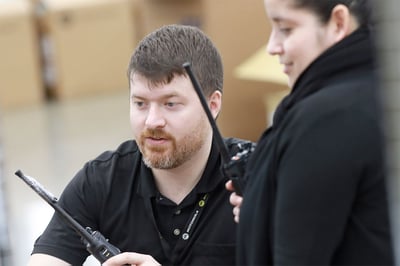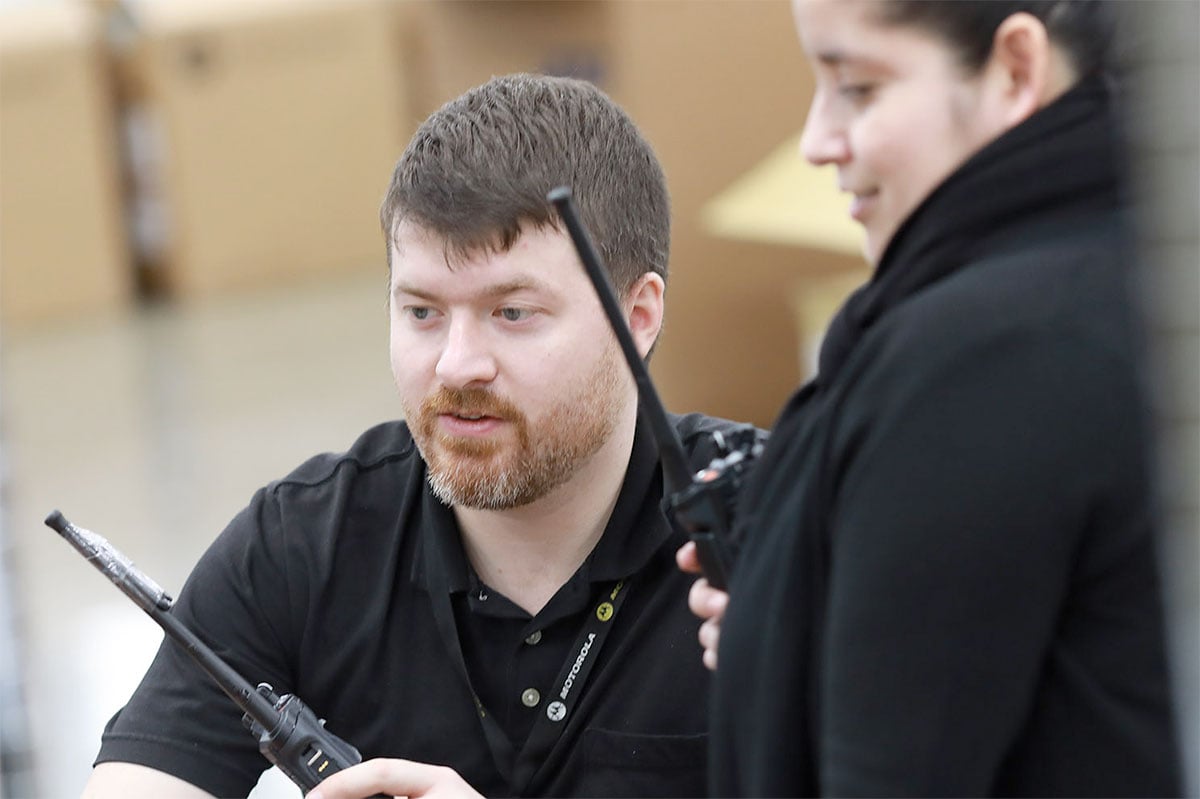 Imagine that your business has decided to use two-way radio communication to keep connected while on site or in the field, but no one has ever used one. Employees may voice their unease with the devices, or even worse, avoid using them altogether. They may not understand the importance of two- way radios as a safety tool for them and end up hurt.
Imagine that your business has decided to use two-way radio communication to keep connected while on site or in the field, but no one has ever used one. Employees may voice their unease with the devices, or even worse, avoid using them altogether. They may not understand the importance of two- way radios as a safety tool for them and end up hurt.
Your investment is well spent only if the radios are used and used properly. If your team isn’t trained, they won’t use the equipment. If they aren’t comfortable using the equipment, the system you put in place won’t work the way it’s designed because employees won’t know how. This creates safety issues and increases risk. That’s why proper training and efficient interdepartmental communication is crucial to your success.
Sometimes training includes questions like, Why do I need this radio? Using a two-way radio as opposed to a cell phone provides a private network versus a public one. If all usable cell phones and networks crash, your radio system will still work. Two-way radios are safer, more robust and help productivity by providing secure instant communications.
Top Training Points
We work with everyone, from directors, assistants, department heads, security managers, and engineering managers to engineers, factory workers, housekeeping and catering. We tailor instruction needs to each person’s job aspect, and don’t pile on too much information at once. For instance, managers might need in depth training that includes how to use data analysis features while catering personnel might only use their two-way radio for one voice application.
If your company plans to adopt two-way radio communications and wants to train employees, here are the best places to start:
Simple equipment assembly and functions: Learning how to install the radio’s battery, antenna and earpiece is the first step to accurately using a two-way radio. Next, you can explain the differences between a zone and channel, and let employees know which channels to use. Also don’t forget to cover how to make group or private calls.
Everyday operations: There are some functions each employee should know, like how to send texts or voice messages, find contacts, and pair a Bluetooth earpiece for use. A few other basics are how to check battery levels and how to look at diagnostics and test before calling for service. Walk through all the features, buttons and their shortcuts so each employee learns exactly how to use the radio—don’t rely on verbal explanations.
In case of an emergency button: Emergencies happen, and your team needs to be prepared. If the emergency button is pressed on a radio, find the contact’s name and number. As part of our training, we perform an all‑call emergency, and demonstrate how to send a message using default text like “Be right with you” or “Sending help,” or a pre‑recorded voice message. These special features and emergency techniques are important but not common.
Training Ideas & Resources
- At Chicago Communications, we have a customizable Powerpoint presentation you can share with your network as a training manual for team members to study with pictures that make soaking in the information easier.
- If your team will be using an emergency channel, run a simulation to make sure everyone is on the same page. You can either set off the channel live or do a demonstration while everyone is present.
- You may want to conduct a large, detailed staged training session that lets staff members see what the equipment looks like and how it works in the field. Give staff radios to use for hands‑on operations and allow them to ask questions.
Be Trained By The Experts
Chicago Communications provides training in nearly every situation and scenario for any client. Plus, we also train the trainers, and teach equipment maintenance. Our product training covers every product we sell, including:
- Whole two-way radio systems
- Radios, accessories and recorders
- Radio consoles
- Mobile radios as well as desk sets, like the MCC 5000
- Phone and 911 systems
- Motorola devices
We can train one‑on‑one or in‑person, and accommodate everyone from groups of 20 to auditorium style presentations. We do videos and customized Powerpoints to incorporate customer’s videos into the presentation, and we’ll retrain clients on a schedule that fits with your business.



